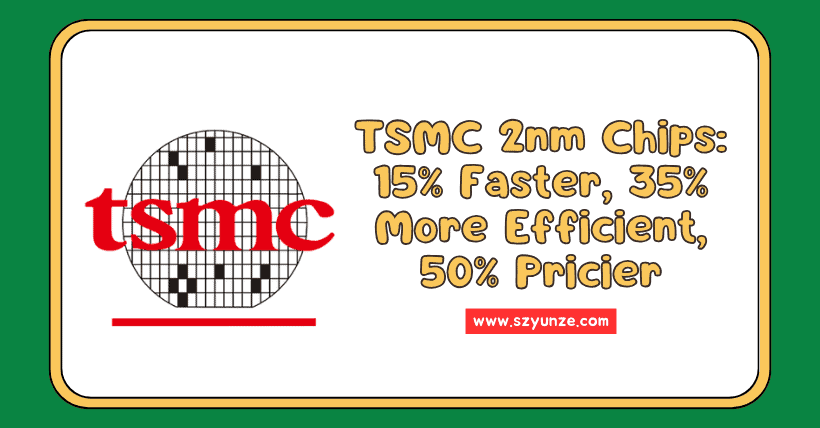If all goes as expected, TSMC’s 2nm chips will enter mass production next year.
For TSMC, the 2nm chip is also a completely new challenge because, this time, TSMC has finally abandoned the aging FinFET transistor technology and switched to the GAAFET transistor technology.
The GAAFET technology was used by Samsung at 3nm, but Samsung clearly encountered problems. The yield rate of their 3nm chips is a mess, and none of the 3nm chips from Apple, Qualcomm, MediaTek, Nvidia, or other manufacturers are made by Samsung—they’re all fabricated by TSMC.
Therefore, for TSMC, adopting GAAFET transistors is also an experiment. However, it is reported that TSMC’s current 2nm chips have already achieved a yield rate of 60%, though it’s unclear if this is true.
In addition, TSMC’s Vice President of R&D and Advanced Technology, Geoffrey Yeap, recently disclosed more details about its N2 process technology.
According to him, compared to 3nm chips, TSMC’s 2nm chips can reduce power consumption by 24% to 35% under the same voltage, or improve performance by 15% without reducing power consumption.
Samsung used GAAFET technology at 3nm.
This is because GAAFET uses a lower threshold voltage, which reduces leakage power and consequently lowers overall power consumption. The performance boost comes from using a more advanced process, which increases the transistor density by 1.15 times compared to the previous 3nm process, leading to improved performance.
However, while power consumption has decreased and performance has increased, the price has also risen. According to earlier media reports, the price of TSMC’s 3nm 12-inch wafer is $20,000, but for 2nm, the price will range from $25,000 to $30,000 per wafer.
If calculated this way, the price could increase by at least 25%, and at most by 50%. These high costs will surely have to be borne by customers.
The question is, is it worth paying 50% more for a 15% performance increase or a 24-35% reduction in power consumption? Is the cost-effectiveness still high? I’m sure many people have doubts about this.
At the same time, we also notice that as chip technology continues to advance, the prices keep rising, but the actual performance improvement is limited. It’s starting to look like squeezing toothpaste.
With such high-end chips and such expensive prices, only high-margin products will dare to use them. Some low-margin products certainly won’t be able to use such advanced technology. The more advanced the chip technology becomes, the lower the cost-effectiveness. This fact is unlikely to be disputed by anyone.
Related:

Disclaimer:
- This channel does not make any representations or warranties regarding the availability, accuracy, timeliness, effectiveness, or completeness of any information posted. It hereby disclaims any liability or consequences arising from the use of the information.
- This channel is non-commercial and non-profit. The re-posted content does not signify endorsement of its views or responsibility for its authenticity. It does not intend to constitute any other guidance. This channel is not liable for any inaccuracies or errors in the re-posted or published information, directly or indirectly.
- Some data, materials, text, images, etc., used in this channel are sourced from the internet, and all reposts are duly credited to their sources. If you discover any work that infringes on your intellectual property rights or personal legal interests, please contact us, and we will promptly modify or remove it.



